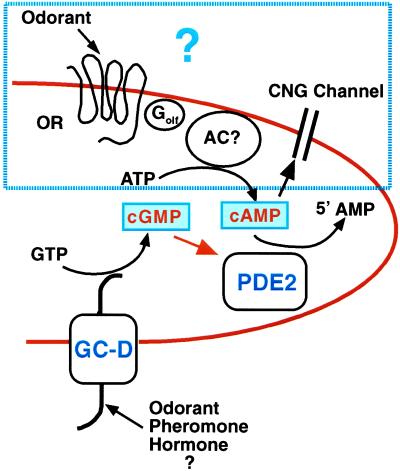Figure 9.
Schematic model of olfactory cilia containing PDE2 and GC-D. GC-D is a transmembrane guanylyl cyclase receptor. Activation of this receptor by its ligand (unknown at present) could result in an increase of cGMP that could activate PDE2 and stimulate hydrolysis of cAMP as well as cGMP. In most neurons odorants are thought to stimulate adenylyl cyclase activity by binding to the G-protein (Golf)-coupled seven transmembrane odorant receptor (OR). The cyclic nucleotide gated channel (CNG) is then opened by cAMP, resulting in transmission of a signal along the axon to the olfactory bulb. We have shown that there is no detectable expression of ACIII or PDE1C2 in these neurons; however, it is not known at present if there is an OR, Golf, or a CNG channel or which cell function in this population of neurons is under control of a cAMP-mediated pathway.

